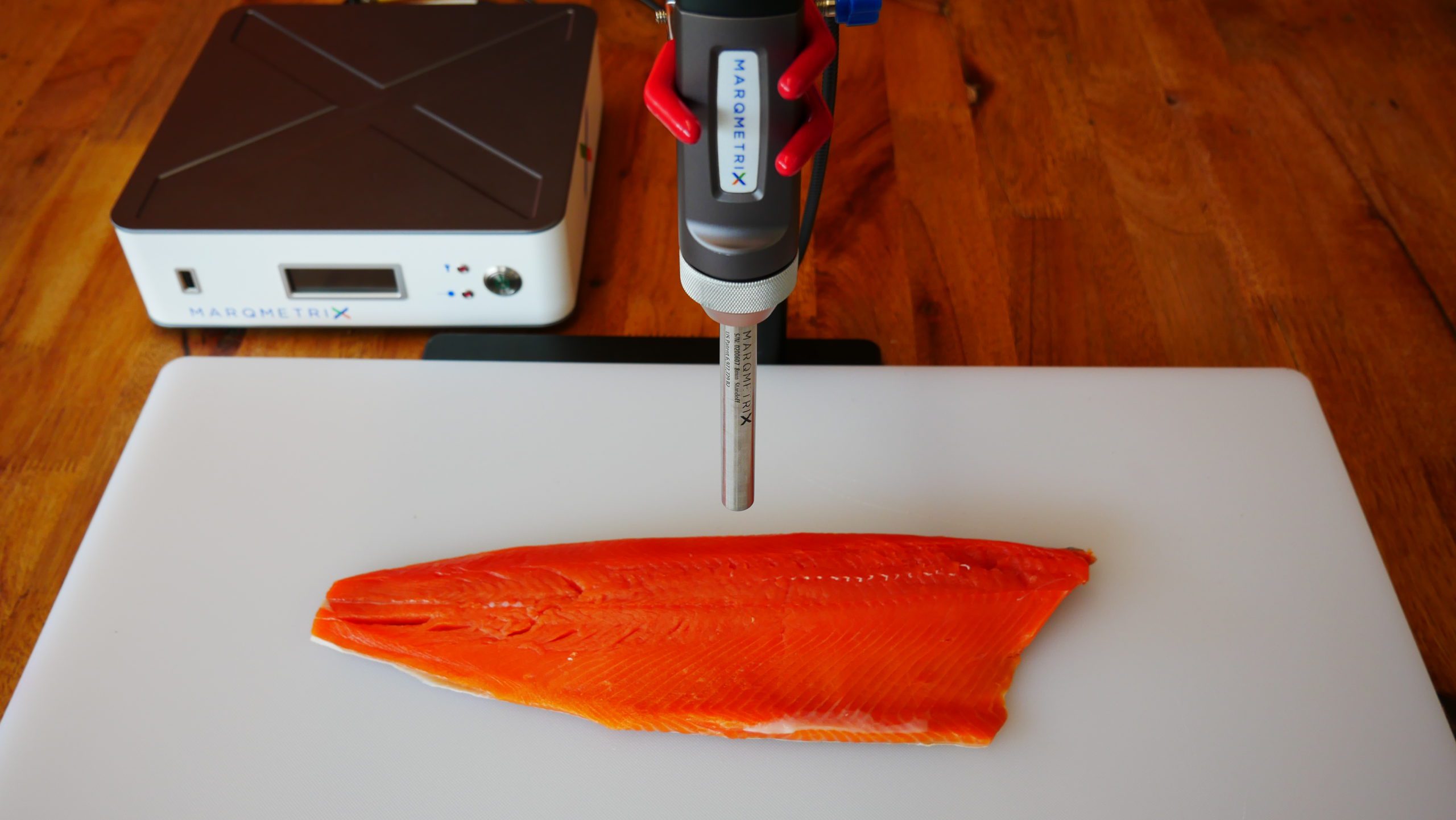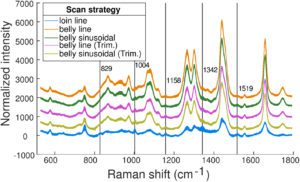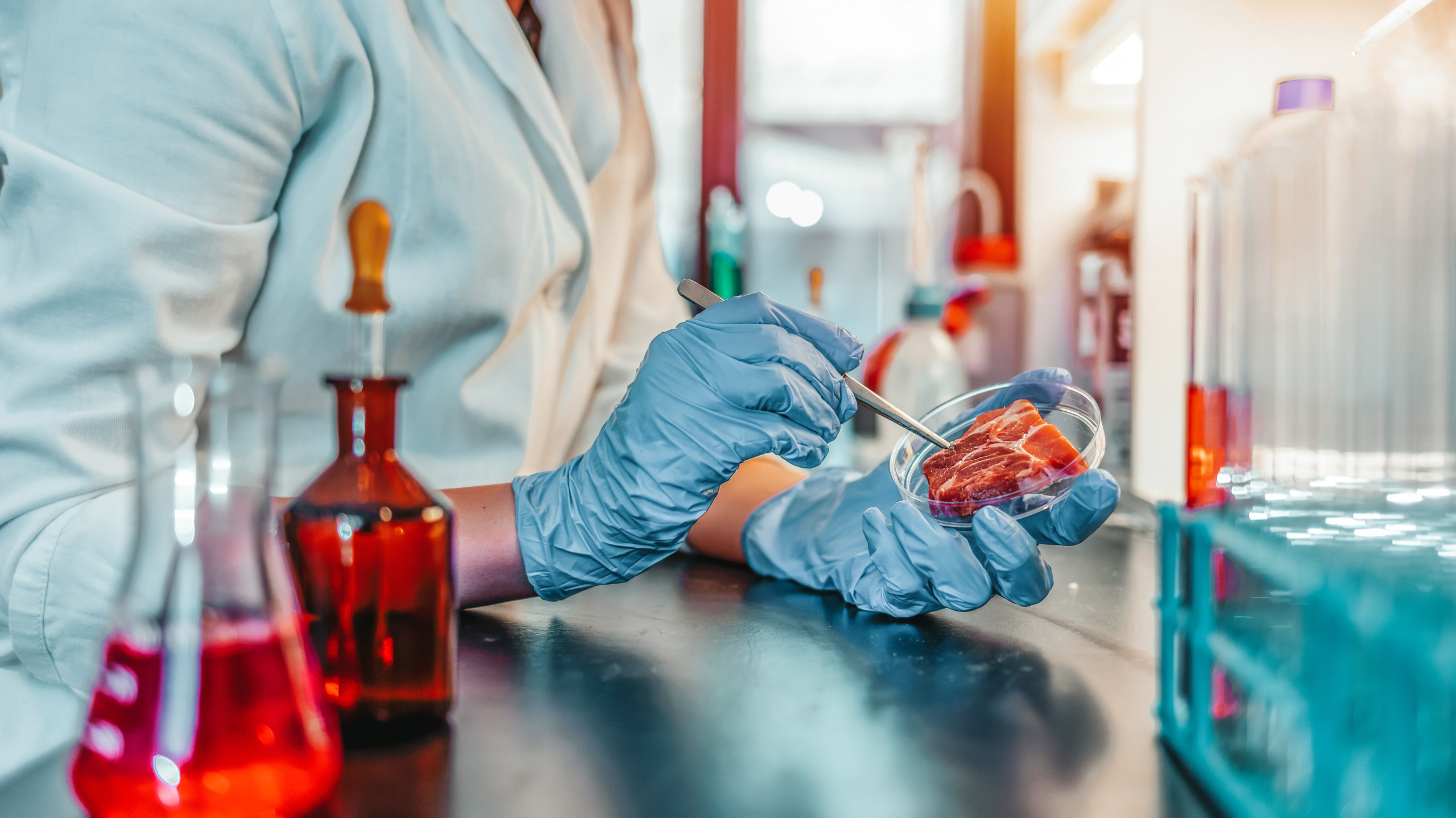The Norwegian Institute for Food, Fisheries and Aquaculture Research (Nofima) used MarqMetrix’s All-In-One system and Proximal BallProbe to monitor fatty acids in salmon fillets.
Summary
Eicosapentaenoic acid (EPA) and Docosahexaenoic acid (DHA) are omega-3 fatty acids found in cold-water fish such as salmon. Nofima conducted a study to determine if Raman spectroscopy could be used to measure fatty acid levels in farmed salmon fillets in-line. The data acquired could help salmon farms determine specific quality attributes and monitor the impact of different feeding regimes, among other factors.
Study At-A-Glance
- Researchers compared Raman spectroscopy to near infrared spectroscopy (NIR)
- A MarqMetrix All-In-One coupled with a Proximal Probe (non-contact) was used to measure fatty acids
- Measurements occurred in-line in a manufacturing setting
Takeaways
The experiment showed that both Raman and NIR are viable methods for in-line measurement of EPA and DHA. However, the study proposed pairing the Raman probe with a robotic arm “to target high fat areas on the fillet during signal accumulation.” The authors also note that “although Raman spectroscopy is practically more challenging to employ in the industry, the method could have considerable advantages with respect to robustness of the %EPA + DHA predictions.”
MarqMetrix and Nofima are participants in the SFI Digital Foods Quality Consortium, a research institution that develops smart sensors for food quality assessment directly in processing lines. A special thank you to our collaborates at Nofima.
Read the full paper here >





